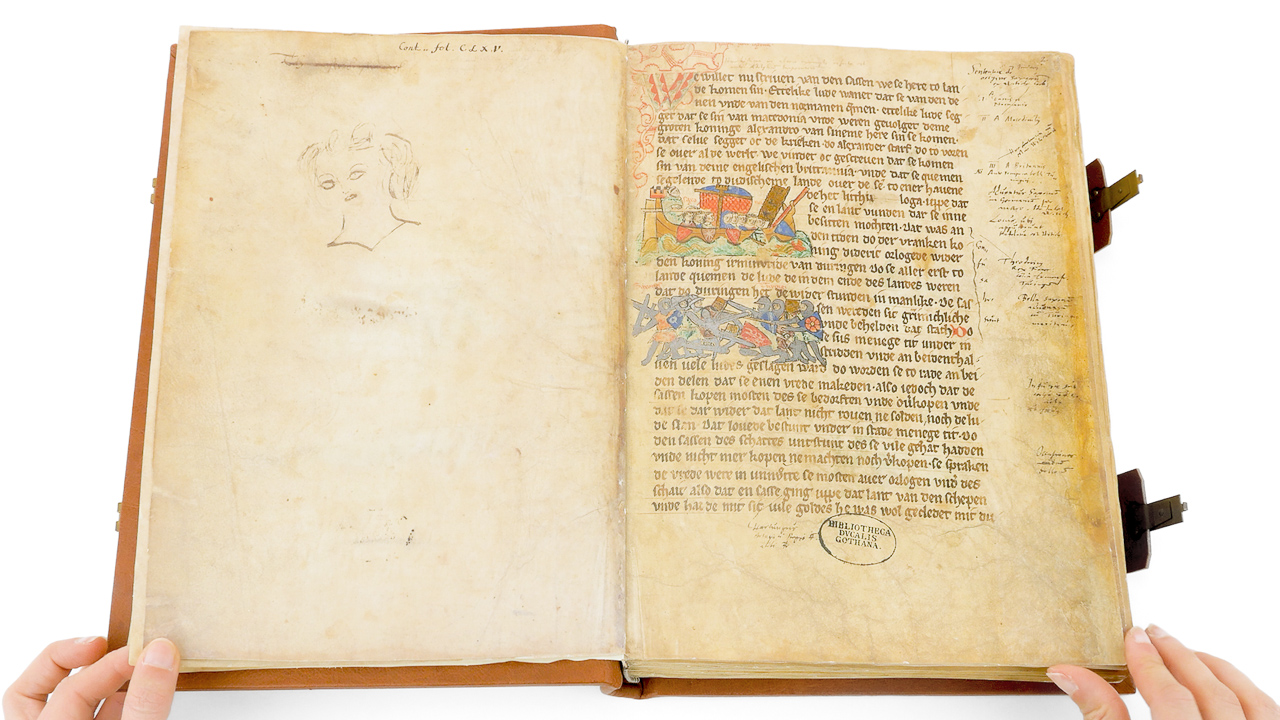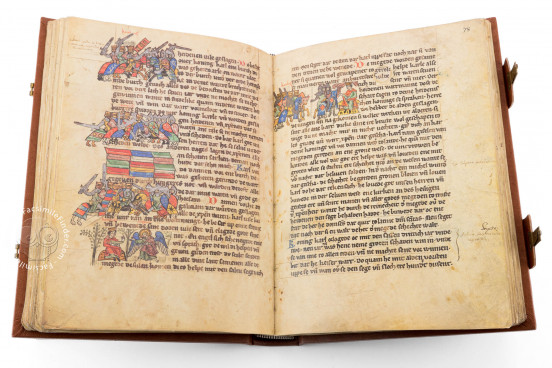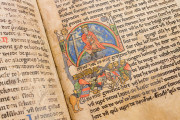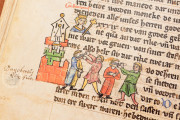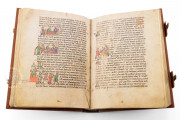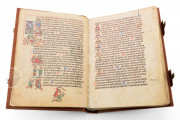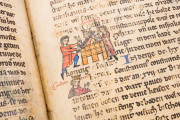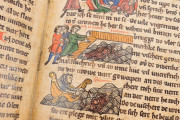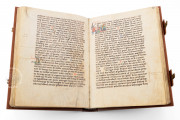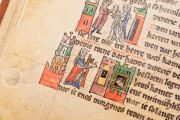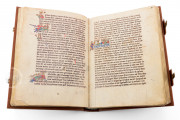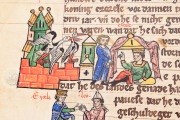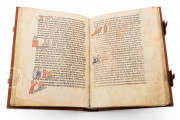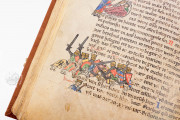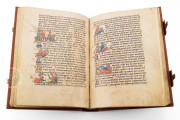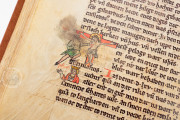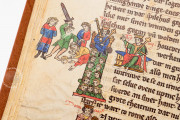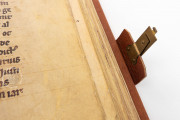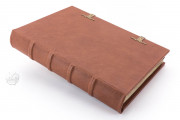This sumptuous codex presents the world's history from the beginning of the world, which the annalist dates as of March 18th, and the creation of Adam and Eve, recalling historical events from the Old and the New Testaments, the turbulence of Antiquity and the storms of the tribal migrations, up to Frederick II, the last descendant of the Staufer dynasty.
The story begins with the fratricide committed by Cain, paralleled in early Roman history when Romulus killed his brother Remus. Although the advent of Christ in the world announces an era of love and salvation, the Book of the World paints a quite mournful picture of human history, an endless story steeped in an ocean of blood and tears. The nadir is reached with the investiture struggle between the Pope and the Emperor which plunges the whole world into an abyss.
A Perfect Layout
The well-thought-out combination between pictures and text is one of the most important features of this marvelous chronicle. All illustrations are placed exactly beside the corresponding lines in the text.
The selection of themes represented in the illustrations permits to concentrate on the essential narrative scenes, thus creating a vivid, pictorial commentary. It enlightens the text and, at the same time, provides a brief resume.
The individual motives were carefully selected so that the viewer could grasp the entire narrative with a glimpse. The miniatures are not only decorative but also serve as entertaining memory aids. This history book must have been made by most diligent scribes and imaginative illuminators who worked hand in hand.
The Whole World in a Single Book
Man, since the olden days, has always dreamed of a "time machine" allowing him to attend the most important moments of human history or even to pay a visit to Alexander the Great or to Frederick Barbarossa.
Already in Antiquity, there was found a way to fulfill this dream with the invention of the world chronicle as a literary genre. It provided the possibility to have the history of the whole world available at home.
In early Christian times, the authors of such world chronicles saw world history as a carefully planned and target-oriented development directed by the hand of God. The foundations of this conception of history were laid in the Bible.
The perception of history that prevailed in medieval Europe saw a huge horizon with an enormous panorama of great empires. Well-known authors of the Early Middle Ages, like Eusebius, Hieronymus, Augustinus and Orosius, provided this view.
Their works paved the way for a system of interpretation that should remain valid over a thousand years. The great Latin universal chronicles also derive from their work. The laity, however, was excluded from this exclusive "father tongue" used by the clergy and scientists throughout Europe.
In the thirteenth century, the situation changed radically: The Low German linguistic area, which had also seen the creation of the Saxon Speculum, a legal compendium by Eike von Repgow, gave birth to one of the most spectacular works of European book illumination: the Saxon World Chronicle.
The Gotha codex is the oldest and most lavish copy of the Saxon World Chronicle. The manuscript was kept in Wittenberg until the seventeenth century before being transferred to Gotha. Its turbulent history is just as interesting and mysterious as its destiny in the twentieth century. The codex found its way to St. Petersburg as war booty of the Soviet Army and returned to its present place only after quite some time.
We have 1 facsimile edition of the manuscript "Saxon World Chronicle": Buch der Welt - Die sächsische Weltchronik facsimile edition, published by Faksimile Verlag, 1996
Request Info / Price
